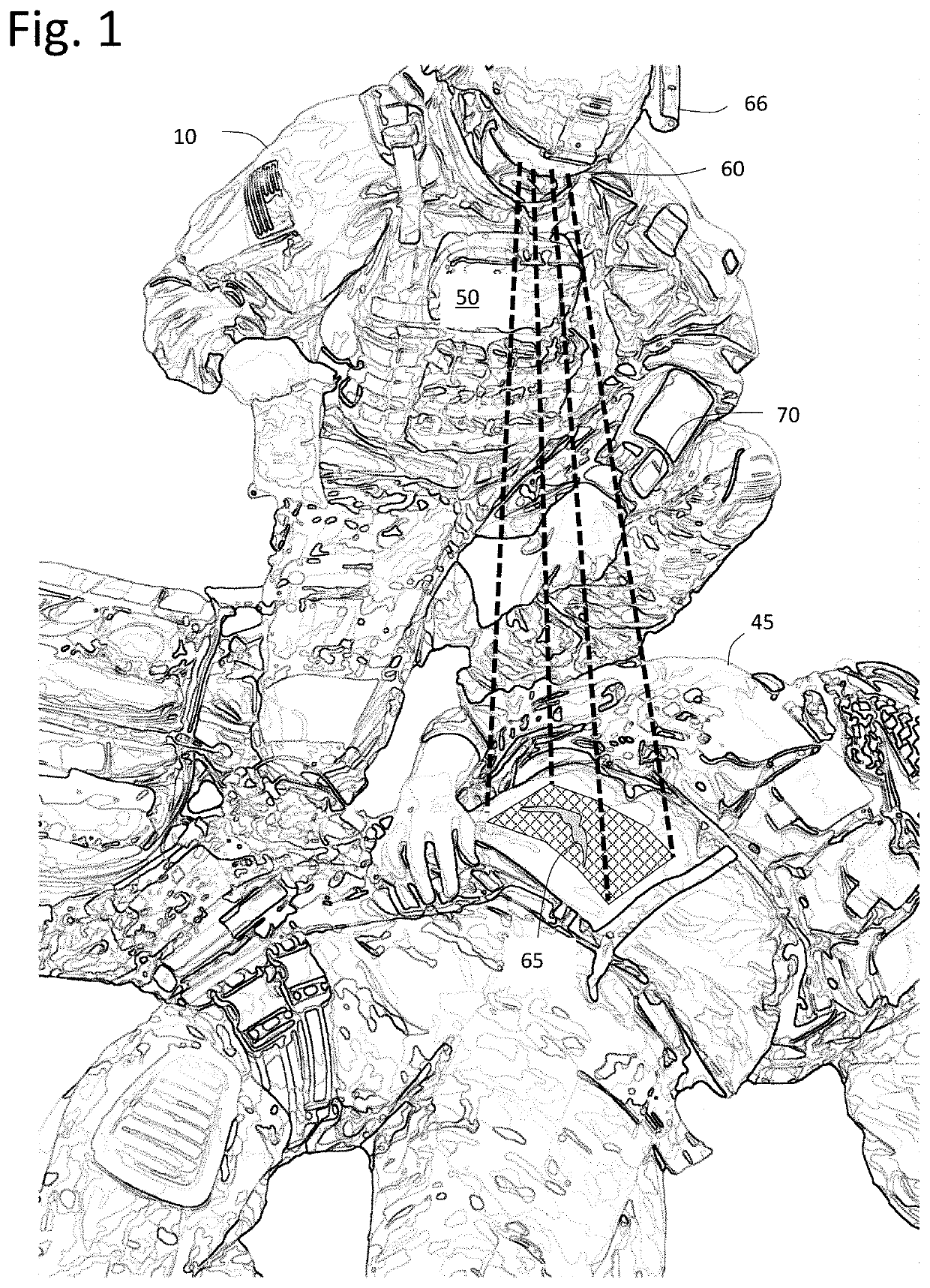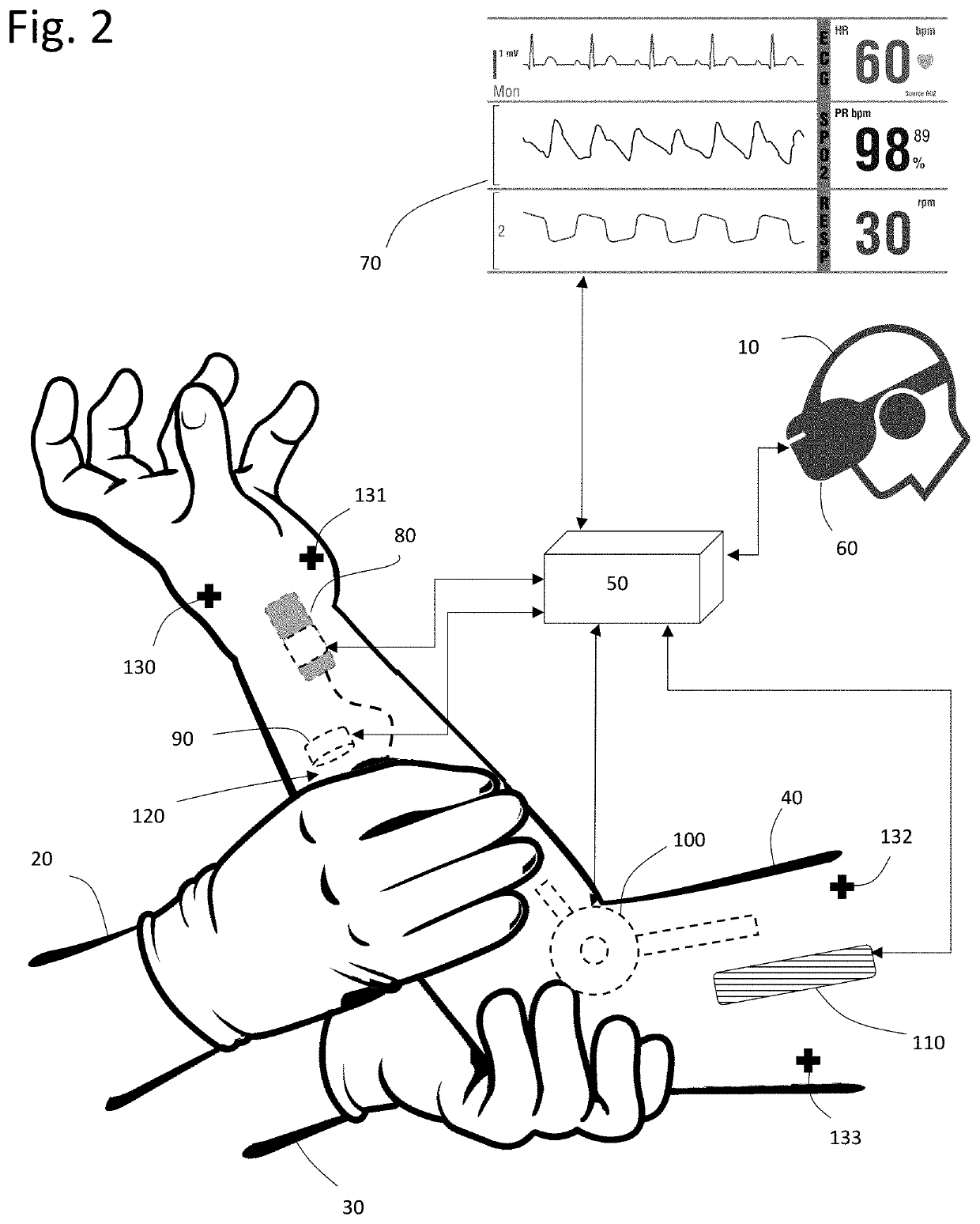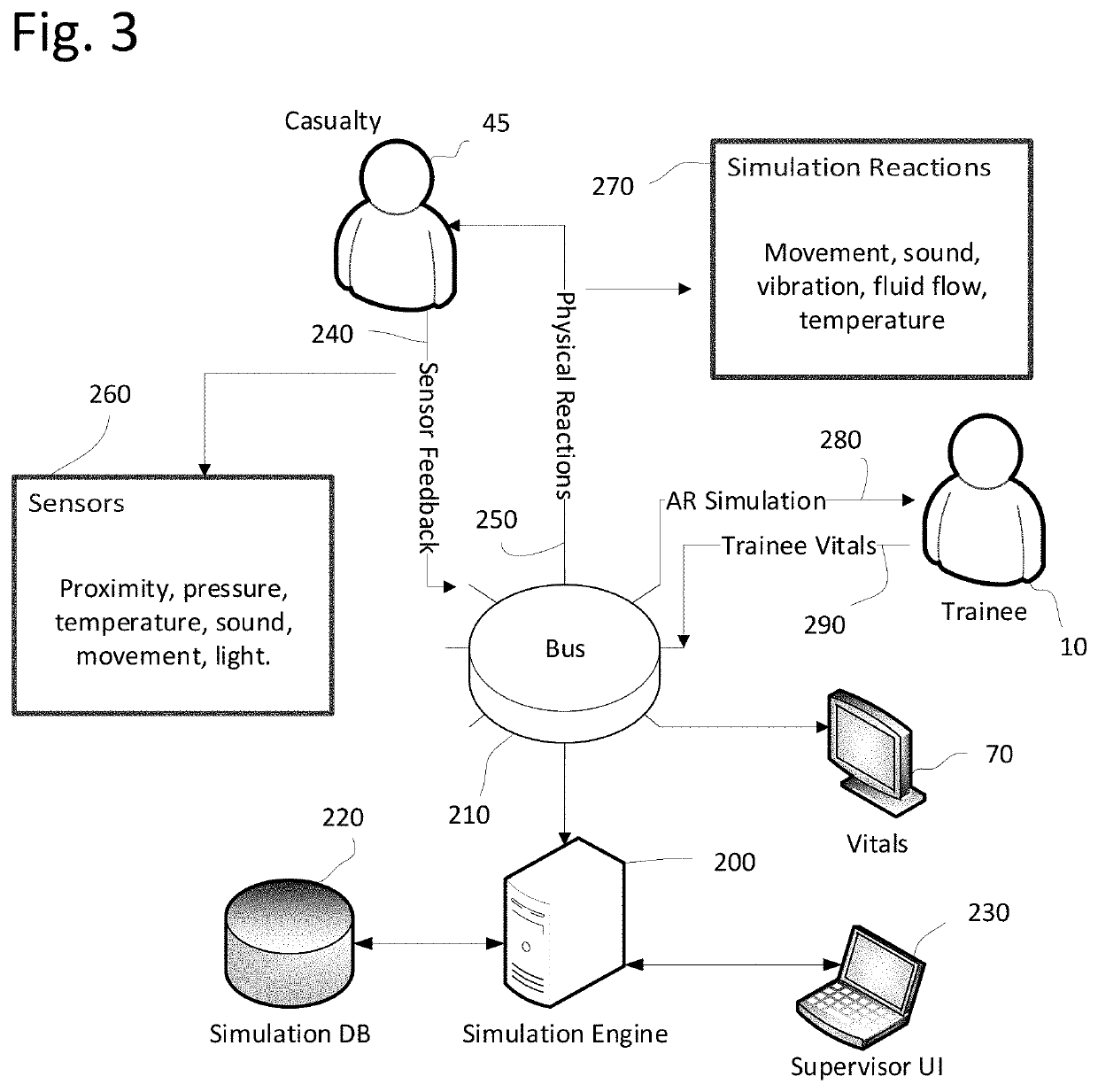Multisensory wound simulation
a multi-sensory, wound technology, applied in the field of medical simulations, can solve the problems of increasing noise into the cognitive process, affecting the flow of the trainee experience, and reducing the time that could be spent providing instruction, so as to improve and revolutionize casualty care training. the effect of improving the realism and overall quality of medical training
- Summary
- Abstract
- Description
- Claims
- Application Information
AI Technical Summary
Benefits of technology
Problems solved by technology
Method used
Image
Examples
Embodiment Construction
[0041]FIG. 1 shows a photographic image of a military trainee 10 and simulated casualty 45 wherein AR glasses (or AR headset / HMD) 60 and sensors 66 on trainee 10 render wounds 65 over static moulage on casualty 45. A portable computer 50 on the trainee's body processes data from the casualty 45 and trainee 10 to enhance the simulation. For example, vitals may be rendered in a heads-up display through the AR glasses 60 on the trainee 10 or on a wrist-wearable display 70. As trainee 10 performs medical procedures on casualty 45, casualty 45 sends data to portable computer 50. The data may be responsive to several sensors including pressure, limb manipulation, temperature, light, and the like. The sensor data is processed on portable computer 50 wherein the wounds and associated visuals 65 rendered in AR glasses 60 change in accordance with the sensor data.
[0042]For example, casualty 45 detects pressure over simulated wound 65. Portable computer 50 then modifies AR rendering 65 to decr...
PUM
 Login to View More
Login to View More Abstract
Description
Claims
Application Information
 Login to View More
Login to View More - R&D
- Intellectual Property
- Life Sciences
- Materials
- Tech Scout
- Unparalleled Data Quality
- Higher Quality Content
- 60% Fewer Hallucinations
Browse by: Latest US Patents, China's latest patents, Technical Efficacy Thesaurus, Application Domain, Technology Topic, Popular Technical Reports.
© 2025 PatSnap. All rights reserved.Legal|Privacy policy|Modern Slavery Act Transparency Statement|Sitemap|About US| Contact US: help@patsnap.com



